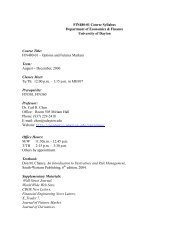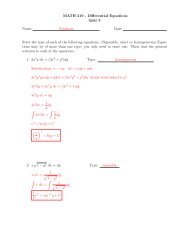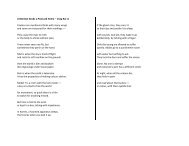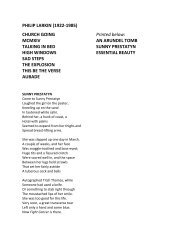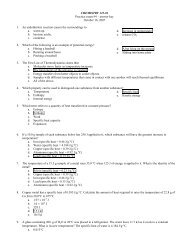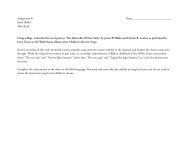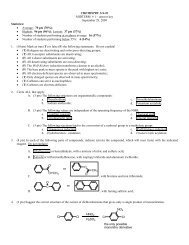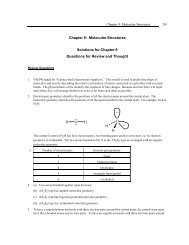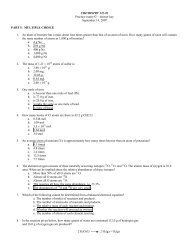Chap 26
Chap 26
Chap 26
You also want an ePaper? Increase the reach of your titles
YUMPU automatically turns print PDFs into web optimized ePapers that Google loves.
MONEY, BANKS, AND THE FEDERAL RESERVE 235<br />
3. When banks receive new deposits of $100 million dollars, they also have received new reserves of<br />
$100 million. The total amount of deposits will stop changing when deposits are at the level that<br />
makes required reserves equal to actual reserves.<br />
Page 247 (page 619 in Economics)<br />
1. The Federal Reserve is the central bank of the United States. The Federal Reserve conducts the<br />
nation’s monetary policy and supervises the financial system.<br />
2. The seven Federal Reserve board members are appointed by the President of the United States and<br />
confirmed by the Congress. Each member is appointed to a 14-year term and the terms are<br />
staggered so that a seat becomes vacant every two years.<br />
3. The Federal Reserve has three policy tools: changes in required reserve ratios; changes in the<br />
discount rate; and, open market operations.<br />
4. The Federal Open market Committee (FOMC) is the main policy-making group within the<br />
Federal Reserve System. It decides upon the nation’s monetary policy as conducted through open<br />
market operations.<br />
5. The FOMC meets approximately once every six weeks.<br />
Page 251 (page 623 in Economics)<br />
1. When the Federal Reserve buys securities in the open market, bank reserves increase so that banks<br />
have excess reserves. Because banks have excess reserves, they loan the excess and a multiple<br />
expansion of the quantity of money results. The initial increase in bank reserves from the Fed’s<br />
purchase of securities means that the monetary base increases when the Fed buys securities. When<br />
the Federal Reserve sells securities in the open market, bank reserves decrease so that banks have<br />
deficient reserves. Because banks have deficient reserves, they must call in loans and a multiple<br />
contraction of the money supply results. The initial decrease in bank reserves from the Fed’s sale of<br />
securities means that the monetary base decreases when the Fed sells securities.<br />
2. With excess reserves, the banks increase their lending and the quantity of money increases.<br />
3. With a shortage of reserves, the banks decrease their lending and the quantity of money decreases.




